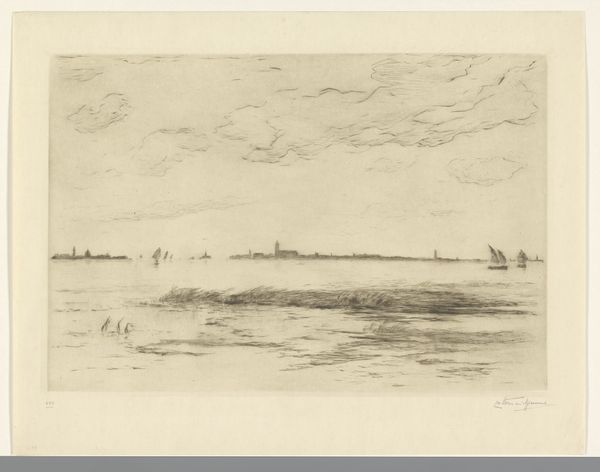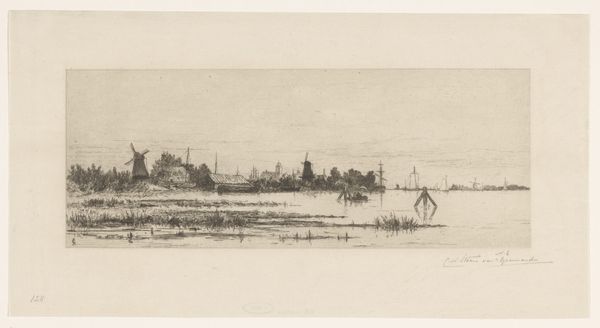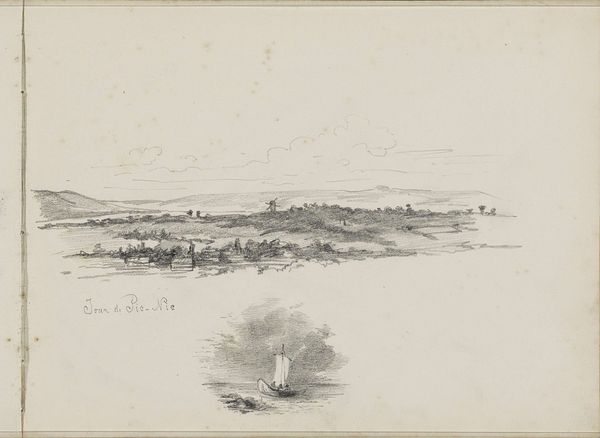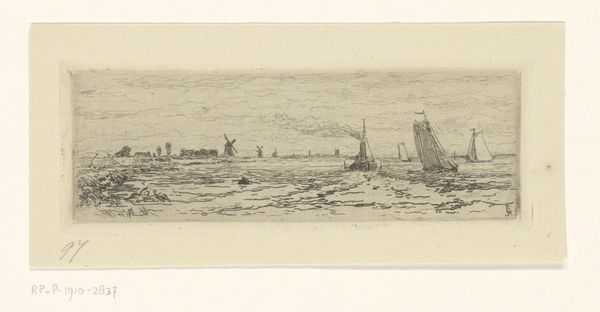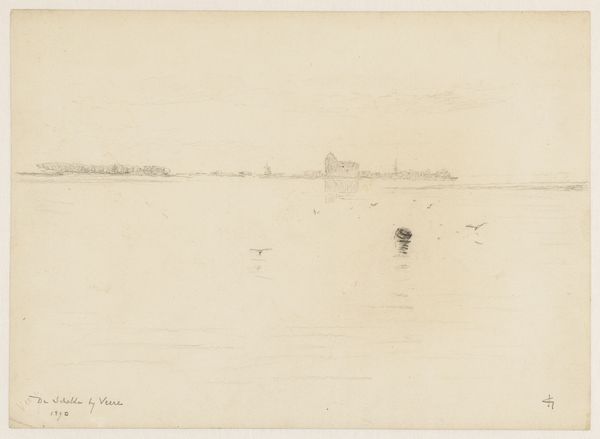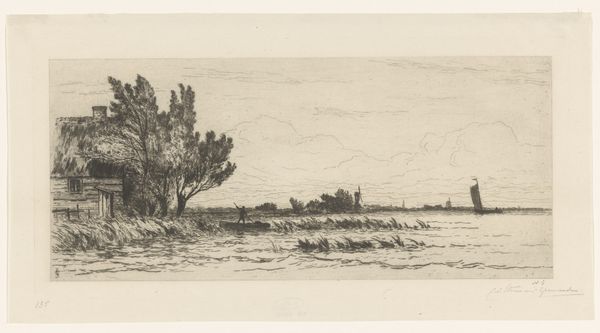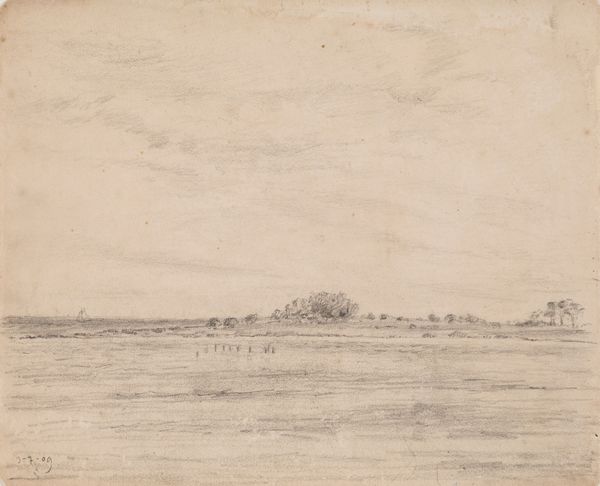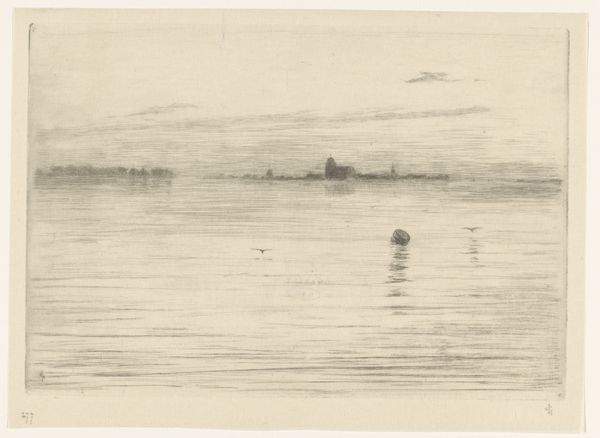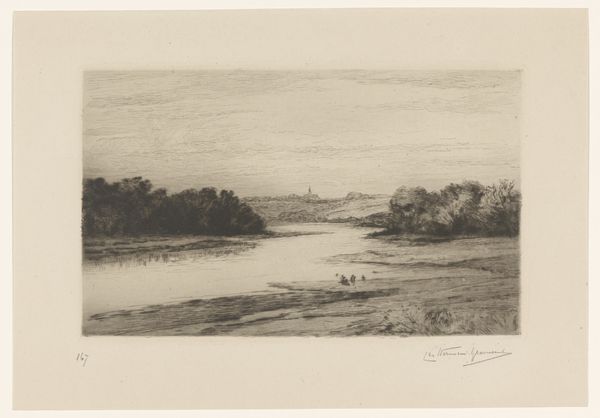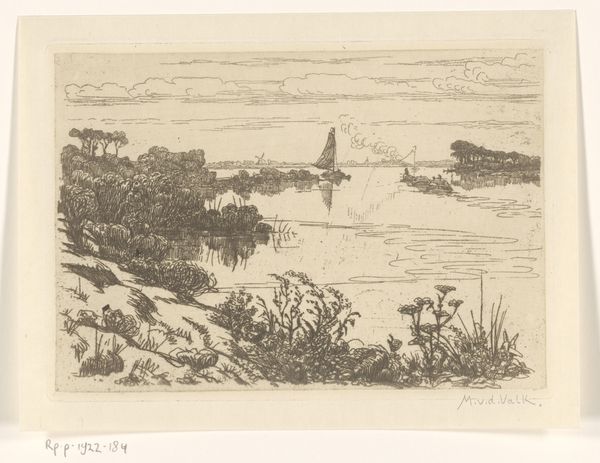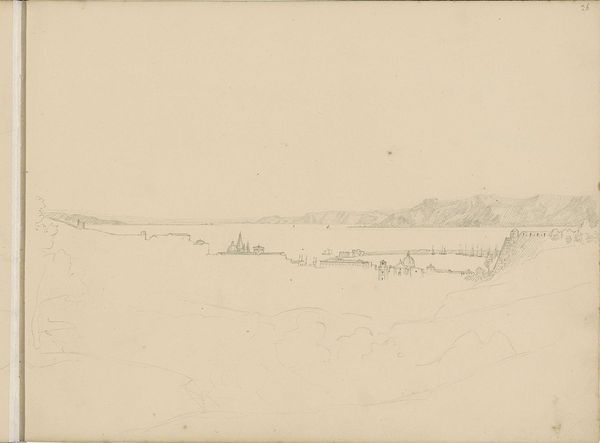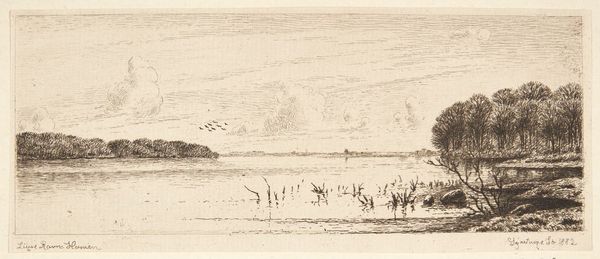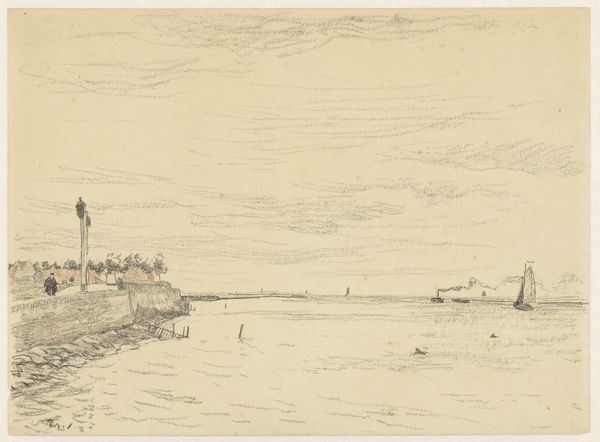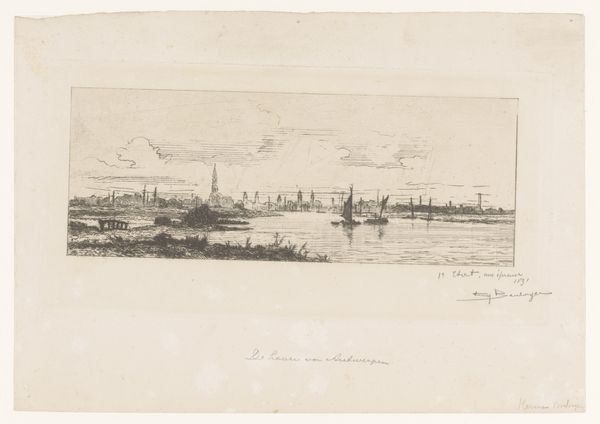
drawing, print, paper, pencil, graphite
#
drawing
# print
#
landscape
#
paper
#
pencil drawing
#
romanticism
#
pencil
#
graphite
Dimensions: 242 × 416 mm
Copyright: Public Domain
Curator: Charles Meryon's "Study," created in 1845, presents a subtle, yet evocative scene rendered in graphite and pencil on paper. Editor: The initial impression is overwhelmingly serene, almost dreamlike. The soft tones create a tranquil atmosphere. Curator: Indeed. Notice the composition, how the artist divides the scene horizontally: a foreground of water, a strip of land punctuated by palm trees, and a vast, almost empty sky. Meryon's focus appears to be on capturing light and atmosphere. Editor: But within that serene composition, one must acknowledge the context of 1845, and how even landscapes are implicated within colonial histories. The presence of the ship hints at the complex relationship of travel and the age of exploration and all it entails. The small island also brings to mind the exploitation of native lands. Curator: From a formalist perspective, the technical skill involved in creating this sense of depth and light with such limited means is remarkable. The delicate pencil strokes build up a range of textures, particularly in the foliage of the small, vegetated mound. Editor: I agree, however it's important to also note what the light chooses to illuminate, as its soft diffusion romanticizes a fraught image of imperial exploration. Who are those small figures wading in the water? Curator: That’s difficult to say definitively. The piece invites contemplation of space, form, and the Romantic artistic ideals of sublime nature. Editor: Perhaps, but it simultaneously hints at the appropriation inherent in romanticizing nature, especially within colonized landscapes. It also causes one to pause and consider the power dynamics inherent within a “study”. Who is studying whom? What are the implications? Curator: I appreciate you expanding upon the visual reading with these points about historical implications and narratives. It opens the work to deeper discussions. Editor: Thank you, I am left to consider that these are vital discussions when considering our inherited global visual culture.
Comments
No comments
Be the first to comment and join the conversation on the ultimate creative platform.
